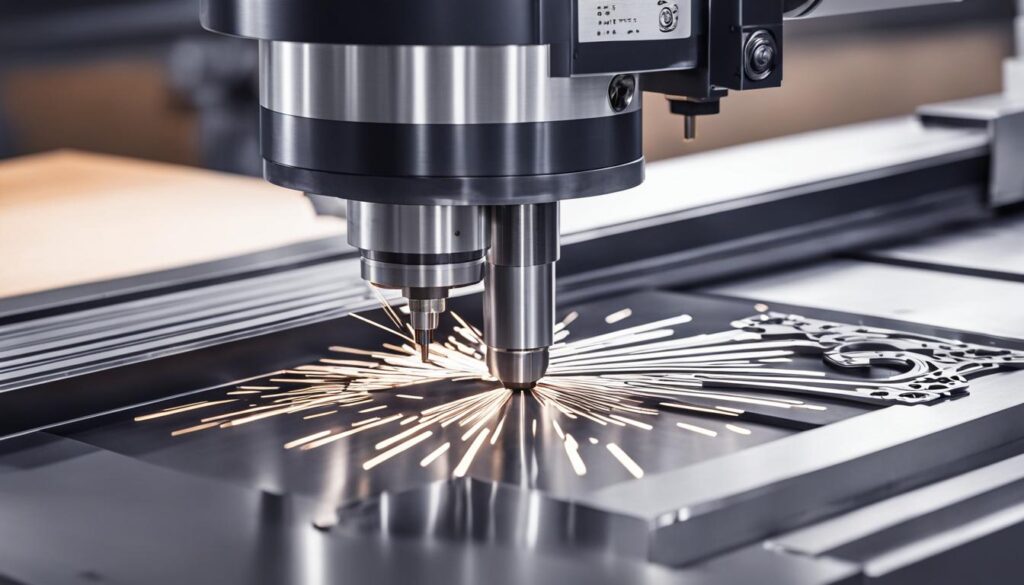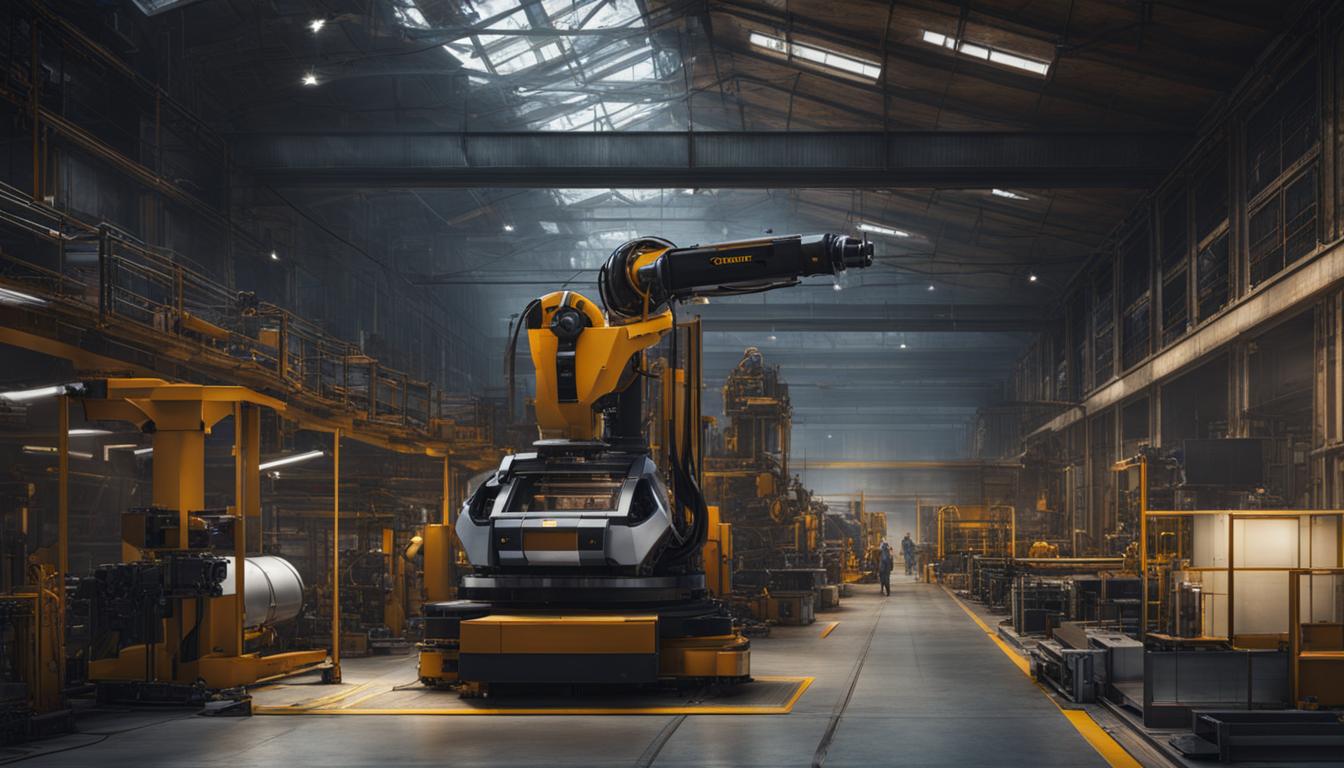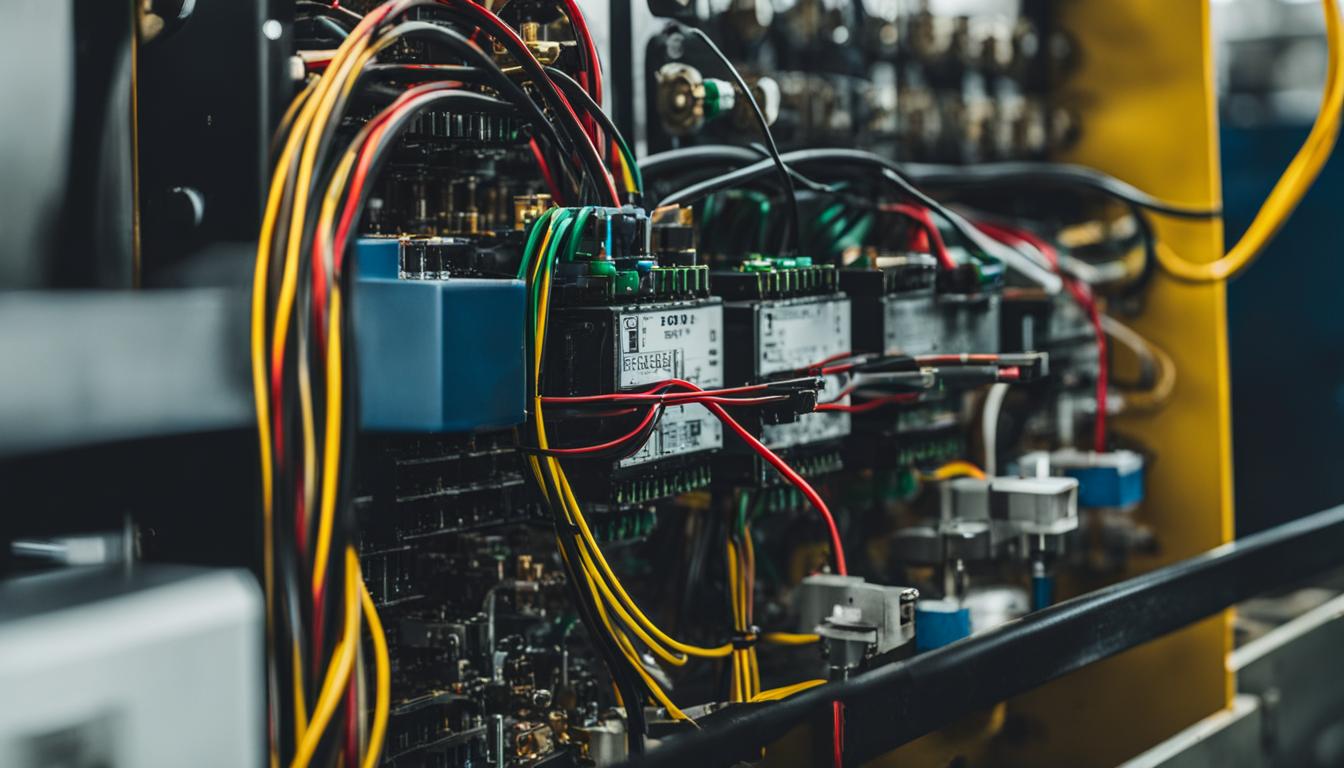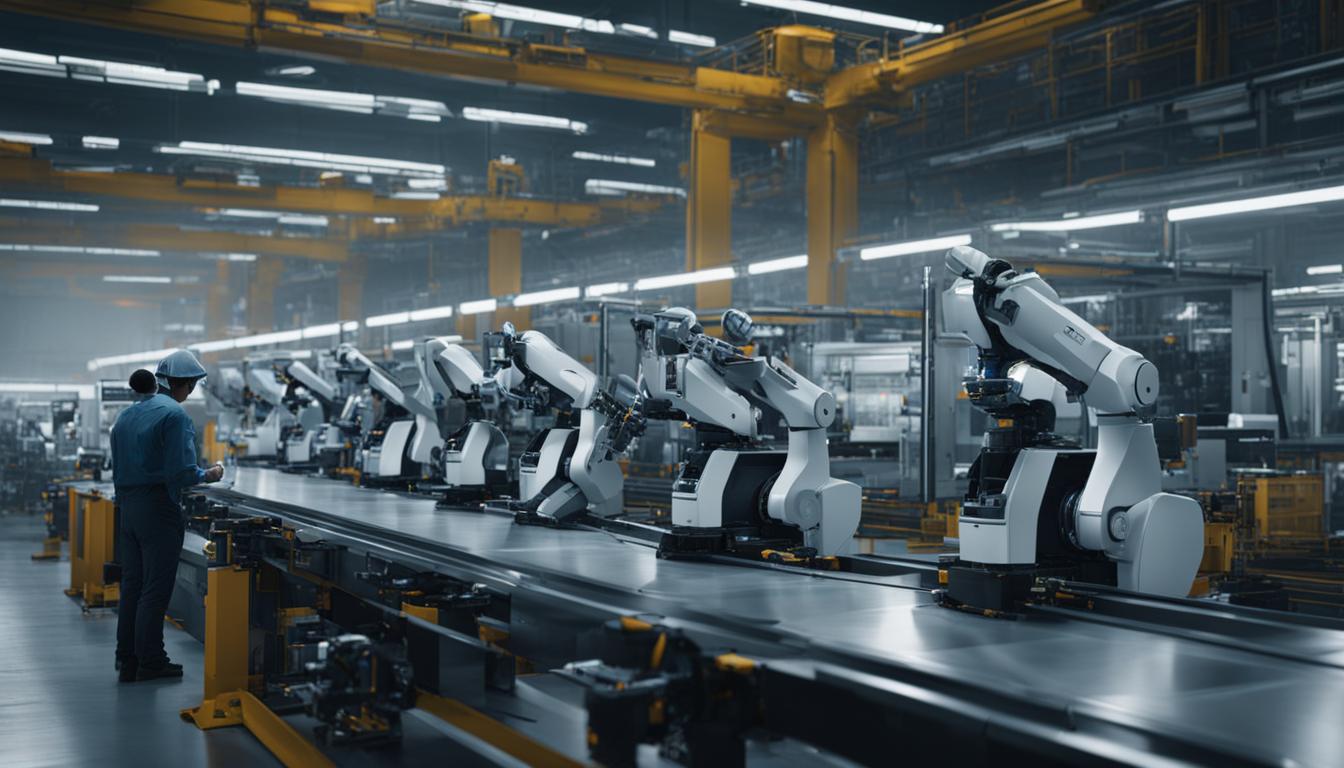Welcome to our comprehensive guide on professional CNC machining. As a leading CNC machining company, we pride ourselves on providing high-quality CNC machining services that deliver accuracy and precision to meet your specific requirements. Whether you need custom CNC machining, CNC milling services, or CNC turning services, we have the expertise and solutions to bring your designs to life.
CNC machining is an advanced manufacturing process that utilizes computer numerical control (CNC) machines to precisely remove excess raw materials and create finished parts and products. With our state-of-the-art CNC machining equipment and experienced team of CNC machining experts, we can produce intricate designs with tight tolerances to ensure the utmost precision in every project.
Our CNC machining solutions cater to a wide range of industries, including aerospace, automotive, and medical. These industries demand the highest quality parts and products, and our precision CNC machining capabilities allow us to meet their stringent specifications. Whether it’s producing components for aircraft, precision parts for automotive applications, or medical devices, our CNC machining services are trusted and relied upon by businesses across various sectors.
At our CNC machining company, we understand the importance of accuracy and quality in manufacturing. Our CNC machining processes are carefully controlled, from the initial CAD file to the final CNC program, ensuring that every step of the production is executed with the utmost precision. We combine cutting-edge technology, meticulous attention to detail, and skilled craftsmanship to deliver exceptional results.
Key Takeaways
- Professional CNC machining offers accuracy and precision for meeting specific requirements.
- CNC machining is a subtractive manufacturing process that utilizes cutting tools controlled by a computer.
- There are different types of CNC machining, such as CNC milling and CNC turning, each with its own capabilities.
- Industries such as aerospace, automotive, and medical benefit from high precision CNC machining.
- The history of CNC machining demonstrates its evolution into an essential tool in the manufacturing industry.
The Basics of CNC Machining
CNC machining is a subtractive manufacturing technology that utilizes cutting tools controlled by a computer to remove material from a workpiece. This process, also known as computer numerical control (CNC), offers precise control over the machining operations, resulting in high accuracy and precision in the finished parts.
The CNC machining process begins with a Computer-Aided Design (CAD) file, which contains the design specifications of the desired part. This CAD file is then converted into a CNC program, which serves as the instructions for the CNC machine. The program guides the machine’s movements and controls the cutting tools to shape the workpiece according to the desired design.
CNC machines are capable of working with various materials, including plastic, metal, and wood. They can produce complex shapes, intricate details, and tight tolerances with consistent accuracy. This makes CNC machining suitable for a wide range of applications across different industries.
There are different types of CNC machines, each with its own specific capabilities and limitations. Two commonly used types are CNC milling and CNC turning. CNC milling involves using rotary cutting tools to remove material from a fixed workpiece, while CNC turning rotates the workpiece while the cutting tool is fed into it to create the desired shape.
The skill of the operator plays a crucial role in the quality of the finished part. A knowledgeable and experienced operator can optimize the machining process, select the appropriate cutting tools, and make adjustments as needed. Additionally, post-machining cleaning and inspection are essential to ensure that the part meets the specified requirements and is free from any defects.
The CNC Process
The CNC process can be summarized into three main steps:
- Design: The desired part is created using Computer-Aided Design (CAD) software, which generates a digital model with precise measurements and specifications.
- Programming: The CAD file is converted into a CNC program that includes the toolpaths, cutting parameters, and other instructions for the CNC machine.
- Machining: The CNC machine executes the program, precisely controlling the movements of the cutting tools to remove material from the workpiece and create the desired shape.
Types of CNC Machining
We can categorize CNC machining into different types based on the number of axes and the machining processes involved. Let’s explore the various types of CNC machining:
3-axis CNC Machines
3-axis CNC machines, such as CNC milling and CNC turning, have three linear axes and are commonly used for subtractive machining. In CNC milling, a rotating cutting tool removes material from a fixed workpiece, shaping it according to the desired design. On the other hand, CNC turning rotates the workpiece while the tool is fed into it, resulting in the removal of material.

5-axis CNC Machines
5-axis CNC machines are equipped with two additional rotational axes, allowing for greater tool accessibility and the machining of more complex geometries. These advanced machines enable precise cuts from multiple angles, ensuring intricate designs come to life. The additional rotational axes can be extremely beneficial in industries where intricate geometries and tight tolerances are required.
Indexed CNC Milling
Indexed CNC milling involves the rotation of the workpiece at precise intervals so that the cutting tool can access various angles. By indexing the workpiece, more complex shapes and contours can be achieved. This method is especially useful when milling complex components that require machining from different angles.
Continuous CNC Milling
Continuous CNC milling, often called simultaneous CNC milling, allows for the simultaneous movement of multiple axes while milling. This technique enables the creation of intricate and complex designs that would be challenging or impossible to produce with other types of CNC machines. Continuous CNC milling is commonly used in industries that require high precision and complex part geometries.
Mill-Turn Machines
Mill-turn machines combine both milling and turning operations in a single machine. This versatile technology enables manufacturers to perform both operations on a single setup, reducing production time and increasing efficiency. Mill-turn machines are widely used in industries that require the machining of complex parts with intricate features and tight tolerances.
Understanding the different types of CNC machining is crucial in selecting the right approach for your specific manufacturing needs. Each type offers unique advantages, allowing manufacturers to achieve the desired results efficiently and with high precision.
Businesses That Benefit from High Precision CNC Machining
High precision CNC machining is a vital process for numerous industries that demand the production of high-quality parts with tight tolerances. In sectors such as aerospace, automotive, and medical, CNC machining plays a pivotal role in creating components and products that adhere to stringent specifications and ensure optimal performance. The unrivaled ability to fabricate intricate designs and achieve precise cuts makes CNC machining the preferred choice for industries where precision and reliability are paramount.
In the aerospace industry, CNC machining is indispensable for manufacturing critical components that require exceptional accuracy and durability. From engine parts to aircraft structures, CNC machining ensures consistent performance under extreme conditions, enabling safe and efficient air travel. The complex geometries and tight tolerances achievable through CNC machining provide aerospace manufacturers with the necessary tools to adhere to stringent regulations and meet the highest quality standards.
The automotive industry also heavily relies on CNC machining for precise manufacturing of various components, including engine parts, transmission systems, and chassis components. CNC machining enables automotive manufacturers to enhance performance, efficiency, and reliability while maintaining consistency and adherence to design specifications. Whether it’s creating intricate designs for aerodynamics or producing tight tolerance engine components, CNC machining plays a critical role in ensuring the overall quality and performance of vehicles.
The medical industry leverages CNC machining to fabricate intricate and precise medical devices, implants, and instruments. From surgical instruments to orthopedic implants, the medical sector requires high-quality parts with meticulous attention to detail. CNC machining allows for the production of customized medical solutions that meet specific patient needs while adhering to the strictest safety and quality standards.
By utilizing CNC machining, businesses in these industries can guarantee that their products meet the specific requirements of their customers. The ability to achieve high precision and maintain tight tolerances ensures the production of high-quality components and products that perform reliably. CNC machining not only enhances product quality but also optimizes manufacturing processes, leading to increased efficiency and cost-effectiveness.
The Benefits of Precision CNC Machining for Aerospace, Automotive, and Medical Industries
| Industry | Benefits of Precision CNC Machining |
|---|---|
| Aerospace |
|
| Automotive |
|
| Medical |
|
Overall, precision CNC machining offers the industries of aerospace, automotive, and medical a reliable and efficient solution for producing high-quality parts with tight tolerances. The ability to create intricate designs, achieve precise cuts, and ensure consistency enables these industries to meet the demands of their customers while maintaining the highest standards of quality and reliability.

The Evolution of CNC Machining
The history of CNC machining can be traced back to the late 1940s when it was first introduced by John T. Parsons. Parsons, an engineer, developed this innovative technology for the production of components for the U.S. Air Force. Little did he know that his invention would revolutionize the manufacturing industry.
Over the years, CNC machining has evolved into a vital tool that offers unmatched precision and versatility. Its impact has been felt across various sectors, including aerospace, automotive, and medical. The ability to produce intricate designs with tight tolerances has made CNC machining indispensable in these industries.
One of the key drivers of CNC machining’s evolution has been the continuous improvement in CAD software. Computer-aided design (CAD) files are now more sophisticated and accurate, allowing for the creation of intricate and complex designs that were once unimaginable. These files serve as the blueprint for CNC machines, guiding their movements to produce precise cuts and shapes.
Furthermore, advancements in machine accuracy have contributed to the growth of CNC machining. Modern CNC machines are capable of achieving extraordinary levels of accuracy, allowing for the production of parts with tight tolerances. This level of precision is particularly vital in industries such as aerospace, where even the slightest deviation can have severe consequences.
Additionally, the operator’s skills play a crucial role in the successful execution of CNC machining. Operators must have a deep understanding of the CNC program and machine controls to ensure optimal performance. Their expertise and ability to make real-time adjustments during the machining process contribute to the overall precision and quality of the finished parts.
The growth and widespread adoption of CNC machining have also been driven by its numerous applications in aerospace, automotive, and medical fields. In aerospace, CNC machining is used to produce critical components for aircraft, such as engine parts and structural elements. In the automotive industry, CNC machining is utilized in the manufacturing of precision components for engines, transmissions, and other vital systems. In the medical field, CNC machining enables the production of intricate and customized medical devices.
The evolution of CNC machining over the years has shaped the manufacturing landscape, enabling businesses to achieve exceptional levels of precision and quality. As CAD software, machine accuracy, and operator skills continue to improve, CNC machining will continue to play a pivotal role in driving innovation and meeting the demands of various industries.
Conclusion
Precision CNC machining plays a pivotal role in industries that demand high-quality parts and products. With its unmatched accuracy and precision, CNC machining enables businesses to achieve tight tolerances, intricate designs, and efficient manufacturing processes. This technology has come a long way since its inception, evolving from a novel concept to an indispensable tool in the manufacturing industry.
Continuous advancements in CNC machinery and techniques ensure that the future of CNC machining remains bright. As new technologies emerge and are integrated into the manufacturing process, precision and quality will continue to be at the forefront. CNC machining has proven crucial in sectors such as aerospace, automotive, and medical, but its benefits extend to various industries.
By harnessing the power of CNC machines, businesses can deliver exceptional products that meet the stringent requirements of their customers. The ability to create intricate designs, maintain tight tolerances, and produce high-quality parts places CNC machining at the heart of manufacturing. As the industry continues to evolve, CNC machining will undoubtedly continue to revolutionize the way we manufacture, ensuring precision and quality in every step of the process.
FAQ
What is CNC machining?
CNC machining is a subtractive manufacturing technology that uses cutting tools controlled by a computer to remove material from a workpiece, resulting in the creation of a finished product.
What industries benefit from CNC machining?
CNC machining is utilized by industries such as aerospace, automotive, and medical, which require high-quality parts with tight tolerances that meet specific requirements.
What types of CNC machining are there?
There are different types of CNC machining, including 3-axis CNC machines, such as CNC milling and CNC turning, as well as 5-axis CNC machines, which enable greater tool accessibility for machining complex geometries.
How accurate is CNC machining?
CNC machining offers unparalleled accuracy and precision, allowing for the creation of intricate designs and tight tolerances, ensuring high-quality parts and products.
What is the history of CNC machining?
CNC machining was first introduced in the late 1940s by John T. Parsons for the U.S. Air Force and has since evolved into a vital tool in the manufacturing industry, with continuous advancements in technology and techniques.




